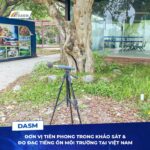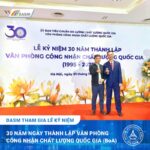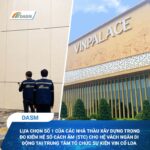5.1 The main part of this standard uses procedures originally developed for laboratory measurements of the transmission loss of partitions. These procedures assume that the rooms in which the measurements are made have a sound field that reasonably approximates a diffuse field. Sound pressure levels in such rooms are reasonably uniform throughout the room and average levels vary inversely with the logarithm of the room sound absorption. Not all rooms will satisfy these conditions. Practical experience and controlled studies (1)6 have shown that the test method is applicable to smaller spaces normally used for work or living, such as rooms in multi-family dwellings, hotel guest rooms, meeting rooms, and offices with volumes less than 150 cubic meters. The measures appropriate for such spaces are NR, NNR, and ATL. The corresponding single number ratings are NIC, NNIC and ASTC. The ATL and ASTC may be measured between larger spaces that meet a limitation on absorption in the spaces to provide uniform sound distribution.
5.2 Annex A2 was developed for use in spaces that are very large (volume of 150 m3 or greater). Sound pressure levels during testing can vary markedly across large rooms so that the degree of isolation can vary strongly with distance from the common (separating) partition. This procedure evaluates the isolation observed near the partition. The appropriate measure is NR, and the appropriate single number rating is NIC.
5.3 It is sometimes necessary to demonstrate that the sound insulation of a partition meets or exceeds a specific criterion. Annex A1 provides additional requirements, and describes how shielding procedures can be used to reduce flanking transmission in stages to show that a partition has achieved a minimum value of the FTL or minimum value of the FSTC which may meet or exceed the criterion. If it is demonstrated that no significant flanking exists through shielding of all potential flanking paths, then, and only then, FTL and FSTC may be reported without qualification.
NOTE 3: Measuring the sound transmission loss properties of a partition itself to demonstrate that it meets or exceeds a specific criterion is very difficult in the field due to the presence of flanking (2, 3). Room volume and absorption requirements must also be met.
5.4 Several metrics are available for specific uses. Some evaluate the overall sound isolation between spaces including the effect of absorption in the receiving space and some evaluate the performance or apparent performance of the partition being evaluated. The results obtained are applicable only to the specific location tested.
5.4.1 Noise Reduction (NR) and Noise Isolation Class (NIC)—Describe the sound isolation found between the two spaces under consideration. Noise reduction data are based on the space- and time averaged sound pressure levels meeting the requirements of 11.3 or A2.3 as required depending on the sound absorption, volume, and shape requirements of 9.2. Noise reduction values are influenced by the absorption in the receiving space as well as the apparent performance of the partition. The noise reduction values in unfurnished spaces will usually be less than in furnished spaces, and noise reduction values between the spaces may differ depending on the test direction used and the sound absorption in the spaces. However, these effects are lessened when the method of Annex A2 is used.
5.4.2 Normalized Noise Reduction (NNR) and Normalized Noise Isolation Class (NNIC)—Describe the sound isolation between two residential or office spaces meeting the requirements of 9.3.1 adjusted to standardized room conditions typical of such spaces when normally furnished.
5.4.3 Apparent Transmission Loss (ATL) and Apparent Sound Transmission Class (ASTC)—Describe the apparent sound insulation of a partition separating two spaces. All sound transmission, including any flanking transmission, is ascribed to the partition. The actual transmission loss of the partition will usually be higher than the apparent transmission loss. These results are in theory the same in each direction but may differ with direction in practice.
5.4.4 Field Transmission Loss (FTL) and Field Sound Transmission Class (FSTC)—These results should theoretically approach the actual sound insulation of a partition or partition element as would be measured in a laboratory, but in practice they often do not. These values may be reported only if the stringent requirements of Annex A1 to reduce flanking transmission are met. Since all flanking is removed to obtain these metrics, they do not reflect the sound attenuation experienced by the occupants when flanking transmission is significant. These results are in theory the same in each direction but may differ with direction in practice.
NOTE 4: Since the metric ASTC includes the effect of direct and flanking transmission, the ASTC will be less than or equal to the FSTC. The difference depends on the magnitude of the flanking transmission. Thus, the ASTC can be used to demonstrate that a partition at least meets an FSTC requirement and may exceed it. If ASTC is measured under conditions that do not satisfy the more stringent requirements in Annex A1, this may introduce other variations.









